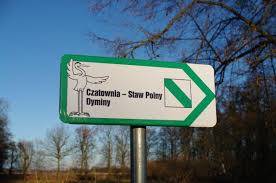The Field Pond is one of the younger reservoirs of the Stawno complex. In the 18th century, there was an extensive New Pond on this site, encompassing the area of several neighbouring modern reservoirs, and it was decommissioned in the 19th century. The Field Pond in its present form was created after the Second World War.
The pond is located within the boundaries of the "Stawy Milickie" reserve. Its southern and eastern banks. To the north-west of it are the buildings of the hamlet of Dyminy. An educational trail "In the land of ponds" leads along the road from Dyminy towards Stawno. The lookout stands in the south-eastern corner of the pond.
Until recently, the view from the lookout was obstructed by dense reeds. In autumn 2012, the area of reed was reduced, making it possible to observe nature on the pond.
Access to the house:
From the fish farm in Stawno eastwards along the road to Dymin (road closed to cars); after 1.2 km, educational boards and the lookout over the pond are visible on the left
Nature:
The Field Pond belongs to a small reservoir. For this reason, large numbers of breeding or fledgling ponds are unlikely to be recorded here. Its small size, however, has its advantages - the inhabitants of the pond can be admired from a short distance.
Most breeding species occur here in numbers of 1-3 pairs; however the diversity of the nesting avifauna is impressive for such a small pond. Three species of grebes breed on the pond (great crested grebe, red-breasted grebe and grebe), four species of ducks (including the little-known common snipe). From the rushes come the voices of the mysterious inhabitants of this habitat: the reed herons bittern and bittern, and the ruffed warblers - the aquatic warbler, common pochard and green warbler. The most numerous water bird breeding on the pond is another brushtail - the coot.
On the branches sticking out of the water you can spot the jewel of the Barycz Valley - the kingfisher. Above the water surface and reeds, birds of prey hunt - the marsh harrier and the much rarer black kite.
At low water levels, several species of waders can be observed here, including sandpipers and ruffs. A big surprise was the observation in spring 2012 of a group of 5 common pochards in a flock of white egrets - a species of waders migrating to Poland from southern Europe.
source: barycz.pl




















